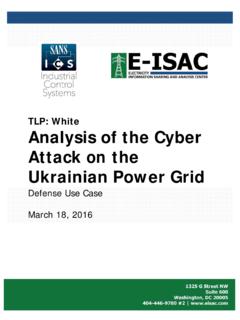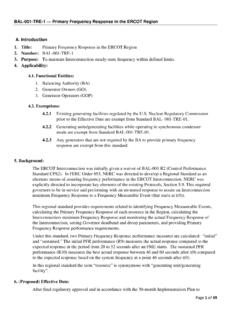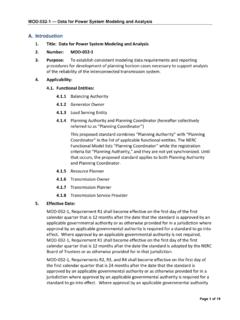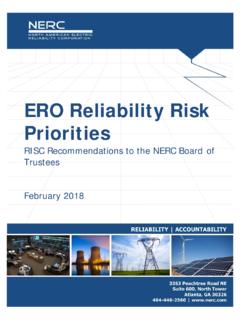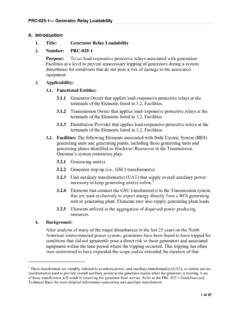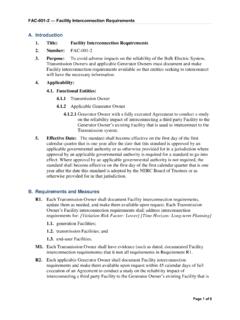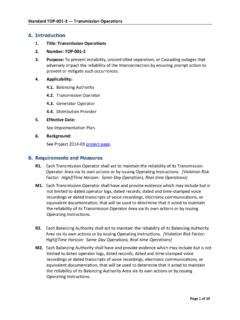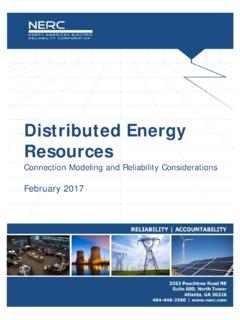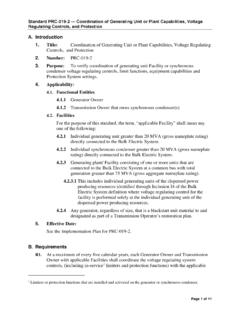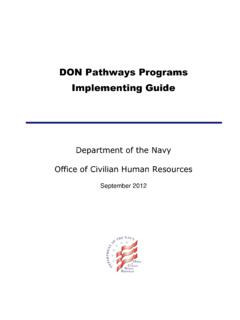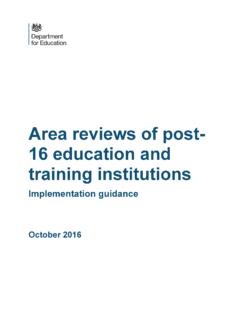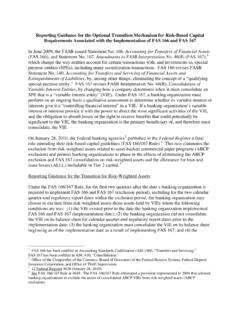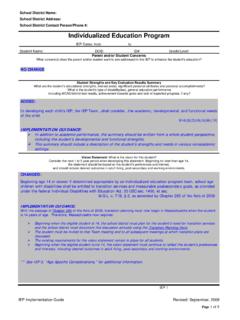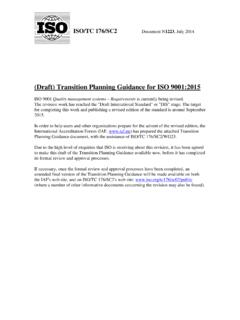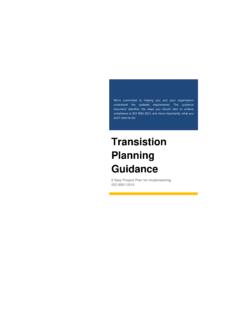Transcription of Cyber Security Standards Transition Guidance (Revised)
1 Cyber Security Standards Transition Guidance (Revised) To: Regional Entities and Responsible Entities From: nerc Compliance Operations and Critical Infrastructure Departments Date: September 5, 2013 Background On April 18, 2013, the Federal Energy Regulatory Commission ( FERC or the Commission ) issued a Notice of Proposed Rulemaking ( NOPR ) proposing to approve Version 5 of the North American Electric Reliability Corporation s ( nerc ) Critical Infrastructure Protection ( CIP ) Reliability Standards ( CIP Version 5 )
2 , filed on January 31, In the NOPR, the Commission proposes to approve nerc s implementation plan to allow Responsible Entities to Transition from compliance with the currently-effective CIP Version 3 Reliability Standards ( CIP Version 3 ) to compliance with the CIP Version 5 Reliability Standards . Under this scenario, the Version 4 CIP Reliability Standards ( CIP Version 4 )2 would never be mandatory and enforceable. In response to the Commission s proposal to approve the implementation plan for CIP Version 5, nerc is issuing this revised Cyber Security Standards Transition Guidance to provide Guidance to Regional Entities and Responsible Entities regarding the Transition from CIP Version 3 to CIP Version 5.
3 This Guidance supersedes the Cyber Security Standards Transition Guidance issued on April 11, 2013, which provided Guidance to Regional Entities and Responsible Entities regarding the Transition from CIP Version 3 to CIP Version 4 while CIP Version 5 was pending at FERC. This Guidance addresses the period between the issuance date of this revised Cyber Security Standards Transition Guidance and the enforcement date of CIP Version 5 ( Transition Period ). Below, nerc provides Guidance for the Transition Period based on the assumption that the Commission will issue its final rule prior to the effective date of CIP Version 4, in line with its proposal in the NOPR to approve the CIP Version 5 implementation plan and leave CIP Version 3 in effect until the enforcement date of CIP Version 5.
4 In addition, nerc outlines its plans to develop a CIP Version 5 Transition implementation Study ( Transition Study ) to collect and evaluate relevant data from select Responsible Entities regarding their experiences in implementing CIP Version 5 requirements. 1 The Commission also proposes to direct that nerc develop certain modifications to the CIP Version 5 Standards to address the matters identified by the Commission in the NOPR. 2 FERC Order No. 761 was published in the Federal Register on April 25, 2012, with an effective date 60 days after publication.
5 Therefore, Order No. 761 became effective on June 25, 2012. CIP Version 4 s implementation plan provides for CIP Version 4 to become enforceable on April 1, 2014. 2 Guidance during the Transition Period nerc acknowledges that entities currently are in various stages of implementation of CIP Version 3 and CIP Version 4. nerc understands the need for flexibility during the Transition Period and is committed to working with industry to address any potential Transition issues. This Transition Guidance applies to Responsible Entities subject to the FERC s jurisdiction.
6 For Responsible Entities not subject to FERC s jurisdiction, compliance with CIP Reliability Standards will continue to be monitored and enforced consistent with the respective framework in place in each jurisdiction. Asset Identification Options Prior to the date of mandatory enforcement of CIP Version 5, a Responsible Entity must continue to comply with the CIP Version 3 Standards (CIP-003-3 through CIP-009-3) during the Transition Entities will continue to comply with CIP-002-3 by maintaining a valid CIP Version 3 risk-based asset methodology ( RBAM ) for Critical Asset identification unless the entity elects one of the alternative options below for identifying assets subject to the controls in CIP-003-3 through CIP-009-3.
7 Entities utilizing one of the options below will not be required to maintain a CIP Version 3 RBAM document or a risk-based discussion justifying their conclusion. Entities may select from the following alternative approaches: 1. Utilize the CIP Version 4 bright-line criteria in its entirety, with the exception of criterion (Blackstart Resources) and criterion (Cranking Paths),4 to identify assets subject to the controls in CIP-003-3 through CIP-009-3; or 2. Utilize the CIP Version 5 High and Medium Impact Ratings to identify assets subject to the controls in CIP-003-3 through CIP-009-3.
8 A Responsible Entity must identify the approach it is using for asset identification as part of its response to a pre-Compliance Audit Survey, a pre-Spot Check data request, or as otherwise requested pursuant to the Compliance Monitoring and Enforcement Program. Entities choosing option 1 or 2 as a valid RBAM may decide to remove assets previously identified under a CIP Version 3 RBAM. CIP Versions 4 and 5 contain requirements for asset identification that permit certain third parties to designate an asset as critical (Reliability Coordinators, Transmission Planners, Planning Coordinators, or Planning Authorities), as identified below.
9 nerc highly encourages these third parties to proactively designate the necessary assets in a timely fashion. CIP Version 4 Related Third-Party Designations (applicable to entities electing Option 1) (Criteria ) Each generation Facility that the Planning Coordinator or Transmission Planner designates and informs the Generator Owner or Generator Operator as necessary to avoid Bulk Electric System Adverse Reliability Impacts in the long-term planning horizon. 3 This includes Responsible Entities who will not have compliance responsibility under CIP Version 5, but do have responsibility under CIP Version 3.
10 4 Control centers associated with Blackstart Resources (Criterion ) and Cranking Paths (Criterion ) shall continue to be deemed critical. 3 (Criteria ) Transmission Facilities at a single station or substation location that are identified by the Reliability Coordinator, Planning Authority or Transmission Planner as critical to the derivation of [IROLs] and their associated contingencies. (Criteria ) Flexible AC Transmission Systems, at a single station or substation location, that are identified by the Reliability Coordinator, Planning Authority or Transmission Planner as critical to the derivation of IROLs and their associated contingencies.
